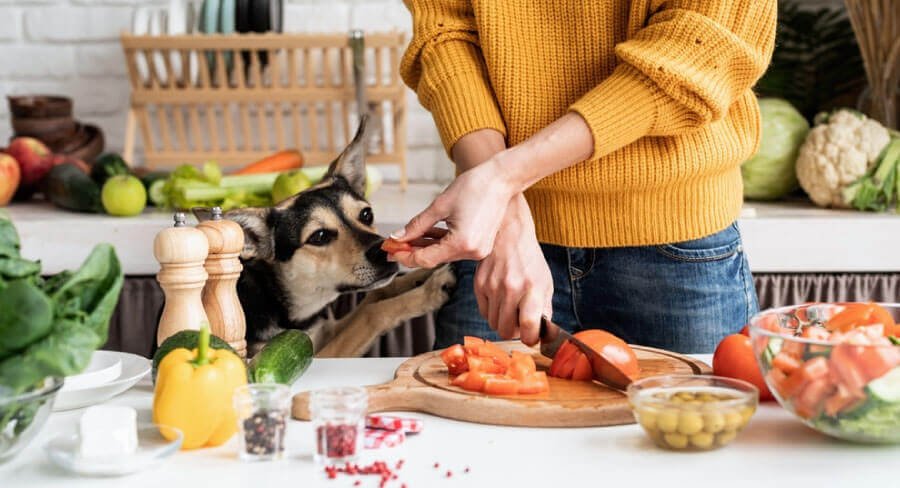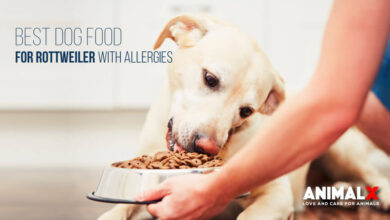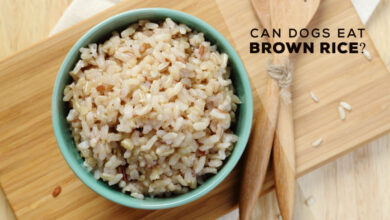How to Prepare Vegetables for Dogs? 8 Healthy Vegetables
Just like humans, dogs require a variety of organic foods and nutrients for a balanced diet. There are many healthy food combinations for your pup. Vegetables are a fantastic source of fiber, minerals, antioxidants, enzymes, and phytonutrients, in contrast to the meat.
Vegetables are a great way to supplement your dog’s diet with extra vitamins and nutrients and protect its long-term health. Giving your dog a variety of veggies is essential since each one offers a special mix of nutrients.
In this article, we will discuss How to Prepare Vegetables for dogs. Let’s read together…
How to Prepare Vegetables for Dogs?
There is tried to discuss the different vegetables’ benefits and how to prepare vegetables for dogs. Such as-

1. Carrot
Benefits: Beta-carotene, which is present in carrots, is transformed into vitamin A. They are also a good source of potassium, fiber, and vitamins K and C. In addition to being a great low-calorie snack, carrots are also healthy for your dog’s teeth.
How Should I Prepare? Remove the ends and wash them thoroughly. Cut into bite-sized treats and steam them for two to six minutes to achieve tenderness in a pot of boiling water. Or you might serve it raw.
Prepare by: Blanching, steaming, fermenting, or pureeing
2. Beets
Benefits: Manganese, folate, and potassium are abundant in beets, which are also nutrient-dense. Beets are full of nutrients that support your dog’s overall health, including healthy skin and a glossy coat, in addition to maintaining a smooth digestive tract.
How Should I Prepare? Beets should be cooked after being cut into manageable pieces. They are challenging for dogs to consume whole as they are rough root vegetables.
Prepare by: Blanching, steaming, fermenting, or pureeing
3. Celery
Benefits: This vegetable for dogs is low in calories and high in nutrients and the vitamins A, B, and C. Additionally, it is water-dense, making it a refreshing treat. It is also 95% water, making it a cool treat for a dog to enjoy in the summer.
Note: This dish may upset your stomach. Start with a small serving and monitor your tolerance.
How Should I Prepare? Wash thoroughly before serving raw. Even though your dog might like the crunch, make sure to cut the vegetable into bite-sized pieces first to prevent choking hazards. It can be given to dogs cooked, raw, or even juiced and added as a treat to prepared dog food.
Prepare by: Blanching, Pureeing, or Fermenting.
4. Cucumber
Benefits: This hydrating vegetable is safe for dogs to consume and contains a lot of vitamin K. abundant in minerals, vital elements, and vitamin C. As a result of their high water content, they are fantastic for hydration. Few calories, No fat, and little sodium.
How Should I Prepare? Peel, split in half and remove seeds after a thorough wash. Make bite-sized cuts. Although segments of cucumber can be cooked for about 5 minutes in a pot of boiling water, cucumbers are usually served raw. Empty the saucepan into the strainer.
Prepare by: Pureeing or Fermenting
5. Sweet Potatoes
Benefits: It is a top-notch vitamin A source. a good source of fiber, manganese, potassium, and the vitamins C, B6, and B5. Low in fat and high in fiber, this food is great for constipation.
How Should I Prepare? If you dehydrate sweet potatoes, they make for a terrific chew. Slice them 1/4 inch thick lengthwise. Simply adhere to the dehydrating directions for vegetables that came with your dehydrator. Additionally, you can give your dog mashed sweet potatoes.
Peel and wash potatoes before cooking. Slice into fourths. Cook for 20 minutes in a large pot of boiling water. Use a fork to test the potatoes. Remove from the pot after thoroughly cooking, transfer to a heat-resistant container, and mash using a potato masher.
Prepare by: blanching, steaming, or pureeing.
6. Potatoes
Benefits: A good source of fiber, potassium, manganese, and vitamins C and B6 high in minerals and vitamins.
Note: Potatoes contain solanine, a poison hazardous to dogs, so never give your dog raw potatoes.
How Should I Prepare? Cleaning well, steaming or boiling, mashing or cutting into wedges, and baking at 325 degrees on parchment paper without adding salt or oil.
Prepare by: blanching, steaming, or pureeing.
7. Peas
Benefits: Great source of vitamins K and C. Manganese, fiber, folate, phosphorus, protein, magnesium, copper, iron, zinc, potassium, and vitamins B1, A, B6, B3, and B2 are all abundant.
Note: Don’t feed peas to dogs with kidney issues. No additional seasonings or spices; frozen or canned foods are OK as long as no more salt, butter, onions, or garlic are used.
How Should I Prepare? Fresh peas are usually available as snow peas, sugar snap peas, or English peas. English peas must be shelled.
You can grill sugar snap and snow peas for about 3 minutes on each side, first lightly coating them with olive oil if you prefer. For English peas, you need to shell them first.
Cook the peas (minus their pods) in boiling water for only two to four minutes until they turn bright green. Drain in a colander.
Prepare by: blanching, steaming, or pureeing.
8. Broccoli
Benefits: Many people think that Can Dogs Eat Broccoli. It is a wonderful source of vitamins C and K. Broccoli has a lot of fiber as well. It is a good source of manganese folate and vitamin A. High fiber content, no fat, and few calories.
Note: Although broccoli is very nutritious, it also contains isothiocyanates, which in some dogs can irritate the stomach. As a result, it’s advisable to give your dog treats occasionally rather than as a regular part of their diet.
How Should I Prepare? Broccoli should be cleaned well and cut into small florets. Put in a steamer and carry out the instructions. Place the florets in an open vegetable steamer over boiling water in a stovetop pot. Steam the greens for 6 to 8 minutes, until they are bright, crisp, and delicate.
Additionally, you may microwave them for about 5 minutes by placing 2 cups of broccoli florets and an inch of water in a microwave-safe container.
Prepare by: Blanching, steaming, fermenting, or pureeing
Alternatives to Vegetable Dog Foods
Although today’s discussion was – about how to prepare vegetables for dogs, still a little difference can be made here. For example, you can offer non-veg food to the dog instead of the mentioned vegetables. And it will be tastier and healthier for your dog. You can try the following non-veg dishes if you wish. Such as-
- Ultimate Egg Rolls
- Boil Chicken Breats
- Chicharron Recipe
- Quesadillas with Beef or Chicken
- Peanut Butter Cookies
- Pork Rinds
- Icing Sugar
- Granola Bars Recipe
Last Suggestions
I hope this information about the different vegetables and how to prepare vegetables for dogs will be helpful to you. Dogs can benefit from eating some of the same veggies that humans enjoy, but there are a few things you should keep in mind when preparing them.
- First, it’s important to choose safe and healthy veggies for your pup – such as carrots, green beans, broccoli, or squash – rather than any other type of vegetable they may not tolerate well.
- Second, make sure you wash all produce thoroughly before serving it up; this will help remove any dirt or bacteria that could cause illness in your pet if ingested.
- Finally, consider lightly steaming or boiling most vegetables before feeding them to your dog; this helps break down some of their tougher fibers so they’re easier on their digestive system!
It’s also important to remember that while fresh is always best when it comes to providing nutritious meals for pets (including those with four legs!), canned and frozen options can work too depending on what kind of veggie is involved – just read labels carefully first! And lastly don’t forget portion sizes: just like us humans need balanced diets full of variety so do our furry friends! So aim for no more than 10% fruits & veggies combined per day based on their overall diet plan prescribed by a vet familiar with canine nutrition guidelines.



